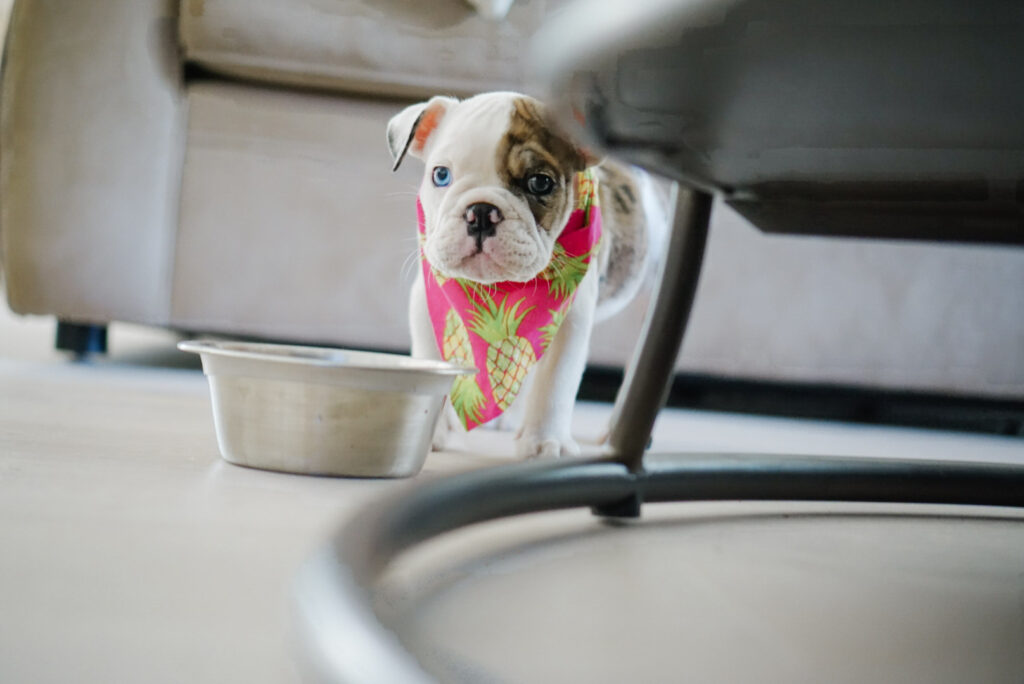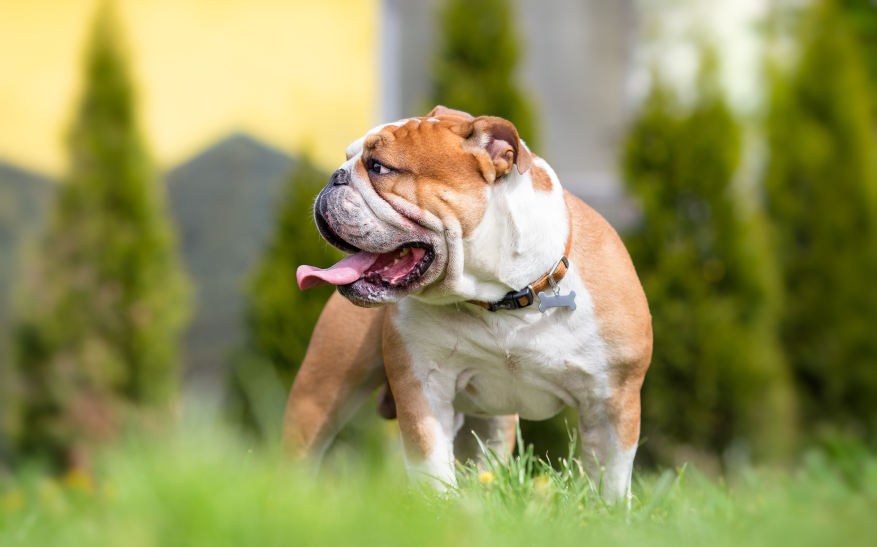There are few things cuter than a mushed face with kind eyes attached to a broad, bowling ball-like body. Strong yet compact, English bulldogs are one of the most unique dog breeds! Due to their specific look and personality, they have become very popular as pets. If you are considering getting an English bulldog puppy, you will want to be sure you can provide for their unique needs. Once you are confident that you and your English bulldog are a perfect match, you’ll enjoy endless cuddling and that sweet, drool-covered face! Let this be your guide to English Bulldog puppies and what you should expect in becoming an owner.
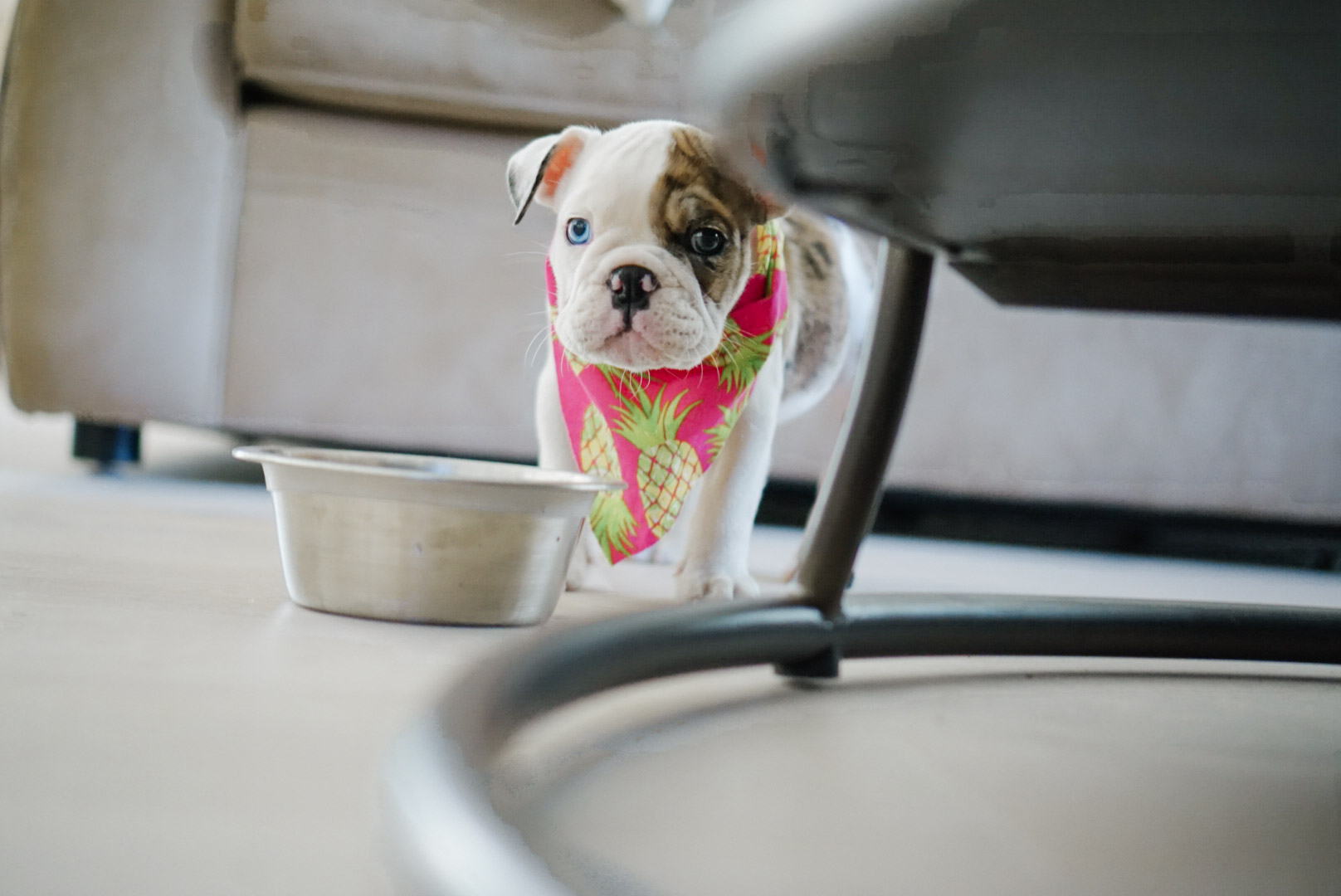
1. Where Should I Find My Puppy
While many owners want a brand-new puppy, it is important to know that there are many English bulldogs up for adoption. Take a look into rescue bulldogs before automatically choosing a breeder. The Bulldog Rescue Network is a helpful resource in finding local rescues. There are many young (and old) bulldogs that need a loving home and you could be the answer!
If you do choose to work with a breeder, make sure you do your research:
- Find one with a good reputation
- Shop locally
- Avoid puppy airplane travel
- Avoid Buying a puppy online – You have no idea about the puppy’s personality, it is much better to be patient and meet the puppy yourself
- See that the dame (puppy’s mom) is healthy and cared for
- Visit the puppy in person
This will ensure that the puppies have not been shipped far and that you are not working with a puppy broker who has the sole purpose of making money.
2. Cost and Expenses
There are two main costs associated with your bulldog: (1) acquiring and (2) veterinary care. Adopting a bulldog is often much cheaper than purchasing one from a breeder. You are typically paying an adoption fee that was used for food and medication. Expect to pay around $500 or less.
If you do choose a breeder, you will be looking at higher pricing. Due to their popularity, English Bulldog puppies range anywhere from $1,500 – $5,000 based on their location, color, purity of breed, health, and appearance. If you find English bulldog puppies for much less, you should be skeptical. This could mean health concerns or they were raised in a puppy mill (a farm used to breed dogs in mass quantities, many times with subpar care).
There is no way to predict health problems but based on the breed, bulldogs experience a fairly high number. Veterinary bills could be high, especially as they reach maturity. You can expect to pay more for routine care due to their unique bodies and characteristics, and are more likely to encounter emergency medical costs later in life.
This breed could cost you thousands of dollars based on greater health risks. Knowing that bulldogs can be a large investment financially, you will be more prepared in making sure the breed is right for you!
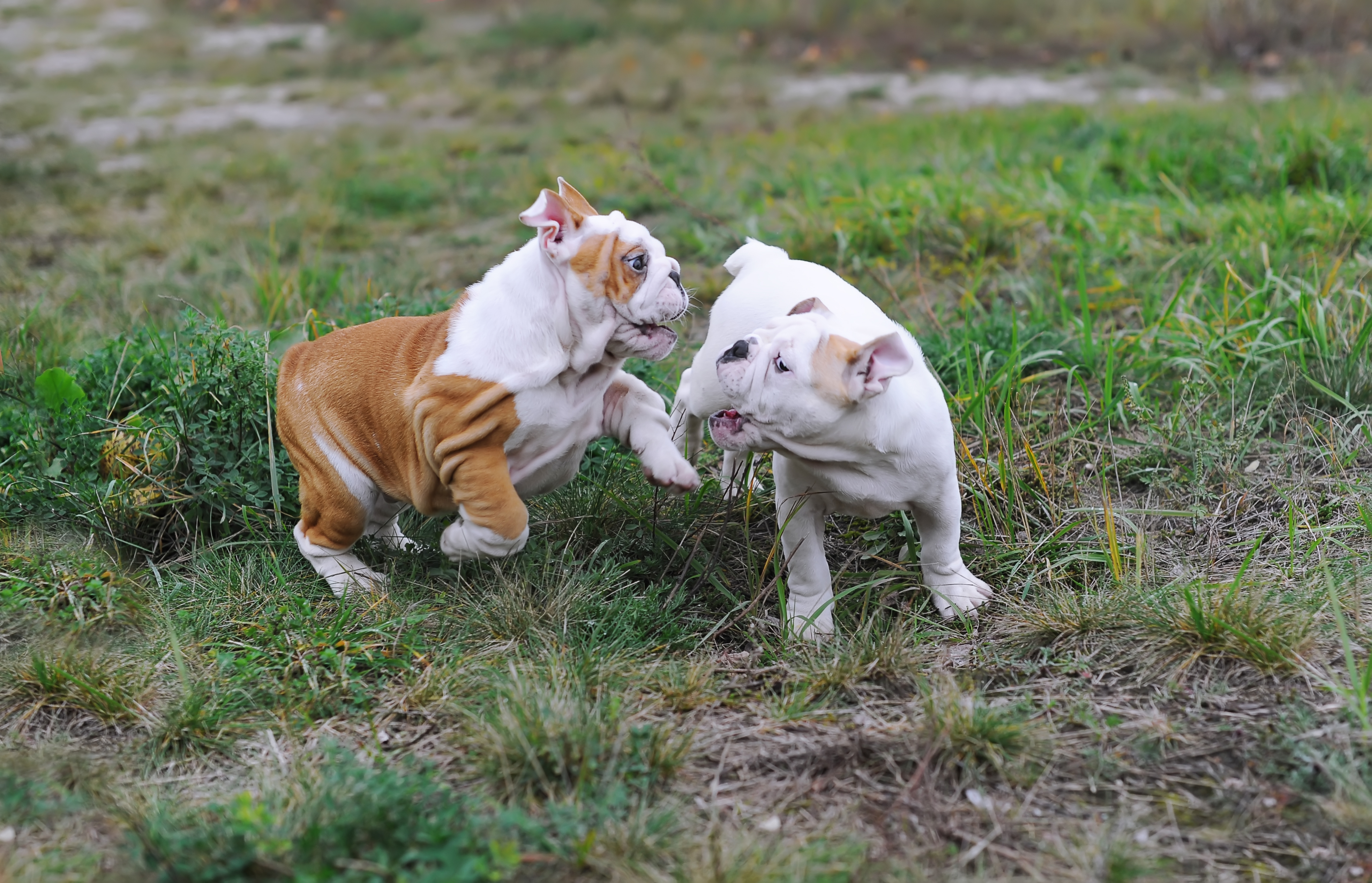
3. Personality
One of the English bulldog’s best qualities is their personality. They are loving companions, making them perfect for cuddling on the couch and spending time with.
Known for being:
- well-tempered
- happy and friendly
- confident
- attention seeking
Not typically fearful or shy, they can make friends with just about anyone! This easy going and fun personality makes them great around children as well. With any dog, you should be mindful of very small children being left unattended, but English bulldogs will be friendly with humans of any age.
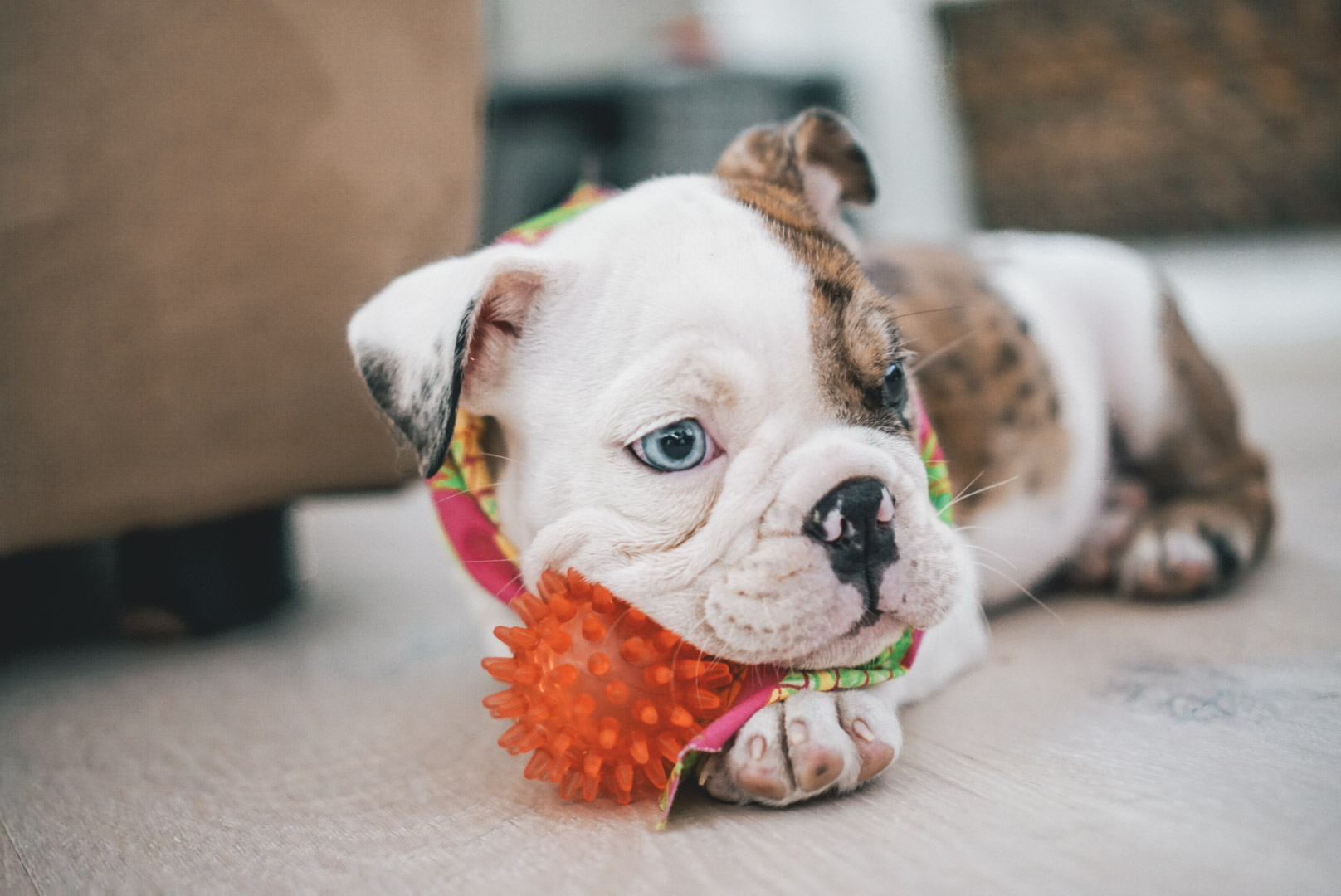
4. What to Look for In Your Puppy
In selecting your English bulldog puppy, there are a couple of things you should look for. For any breed, you should be looking for a puppy who is alert and energetic. Healthy puppies are full of energy and very aware of new environments and people. Having these characteristics suggests that they are unlikely to have sensory issues and are behaving in a typical puppy manner.
As bulldogs are prone to health issues, you should be looking for certain physical characteristics when you choose your puppy. There are three major things to look at when you are selecting:
- Clear Eyes
Bulldogs are prone to infection much more than other breeds. This may occur in their eyes (as a young pup, but also later in life). Look for a puppy that has eyes that are free of discharge. This may suggest further infection or underlying issues.
- Range of Motion
Bulldogs have very unique bone structure as they were bred for their specific look. This has led to skeletal deformities that may limit range of motion. Make sure their limbs can move freely and have full range of motion. A healthy bulldog puppy should not have these joint issues at such a young age.
- Skin
Again, back to infection. English bulldogs are prone to skin infections as well. Make sure your puppy does not have any signs of skin inflammation when you are choosing.
Any of these present physical characteristics at such an early stage may be related to deeper medical issues. You want to start on a healthy note with your new puppy!
5. The Best Home for English Bulldog Puppies
It may sound cliché, but the best home for an English bulldog puppy is a loving and attentive one. While bulldogs are high maintenance in their medical care and treatment, they are low maintenance in their home needs.
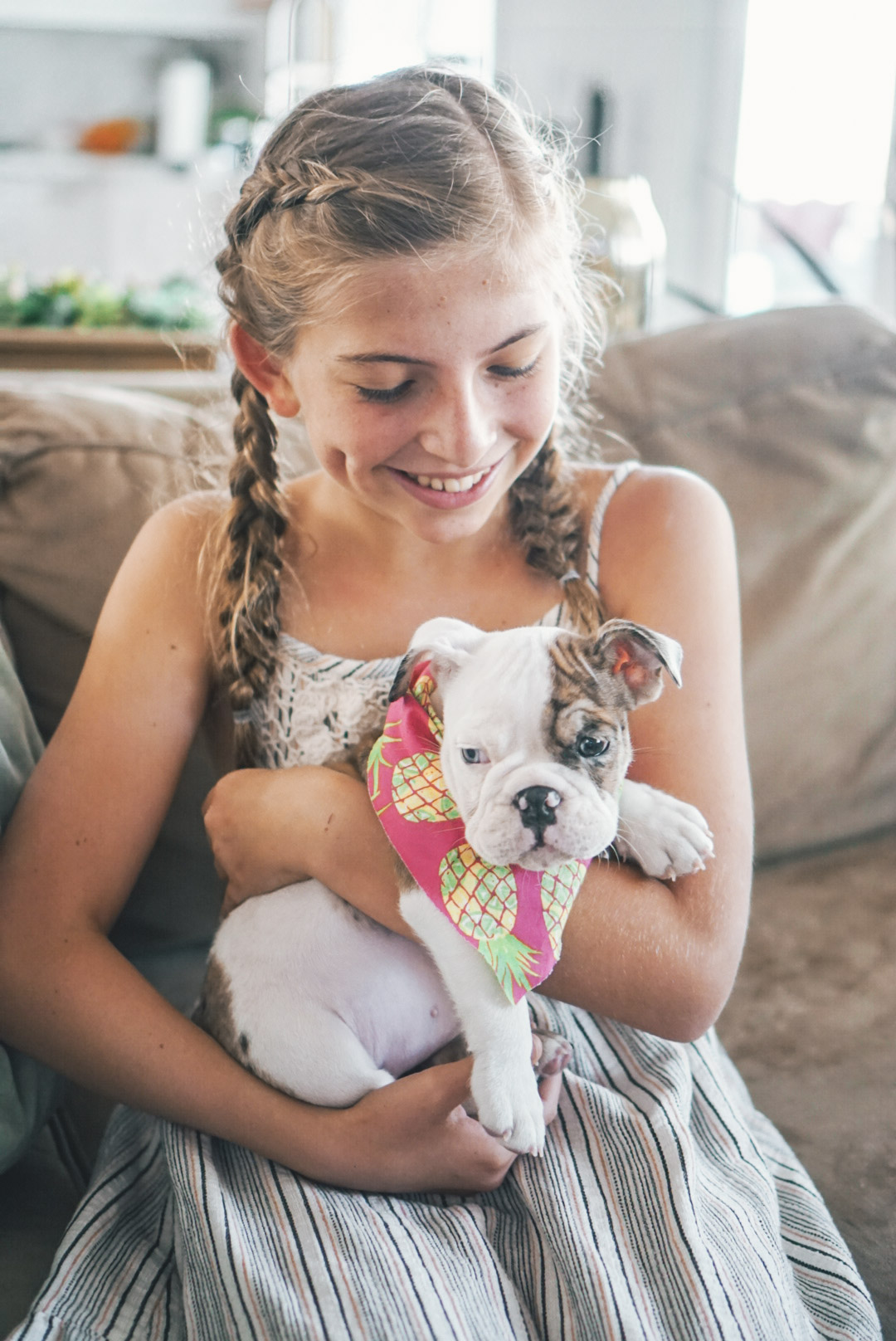
Bulldogs are suitable for all types and sizes of homes. Because they are not big dogs who require lots of space, a bulldog is a great fit for apartments as well as homes with yards. They live well with children, other dogs, and will get along with almost everyone they meet. As they are easy going, they thrive in low stress environments.
An important consideration for the best home is climate. Bulldogs do best in temperate climates and are intolerant of the heat. If it does get hot outside, they need to be managed closely for any extended time spent outdoors. Make sure you have a cool place for them to stay as they can easily suffer from heat-related illnesses.
6. Choosing the Right Puppy for Your House
While you can provide a stable and comfortable space for your English bulldog puppy to live, it is also important that your specific dog works for you!
The Volhard’s Puppy Aptitude Test was developed to match puppies in a suitable home based on their behavior. This test covers 10 key areas as a gauge for socialization and tendencies, making it a great tool for understanding development and training needs.
The test covers 10 areas:
- Social attraction
- Following
- Restraint
- Social Dominance
- Elevation Dominance
- Retrieving
- Touch Sensitivity
- Sound Sensitivity
- Sight Sensitivity
- Stability
These categories are scored using a number system and the results determine which type of home would be most suitable. Scoring primarily in certain categories will help an owner determine the temperament of their specific puppy and if their lifestyle matches the needs of the animal.
It will tell you about the puppy’s dominance tendencies, independence, confidence, energy levels, training needs, anxiousness and stress, and aggressiveness.
Your English bulldog puppy will most likely follow traits typical of its breed, but every dog is different! This test will tell you more about your specific puppy and how you can provide the best environment for them!
We have done this test with everyone of our dogs and it has perfectly predicted their personality so I highly recommend doing so.
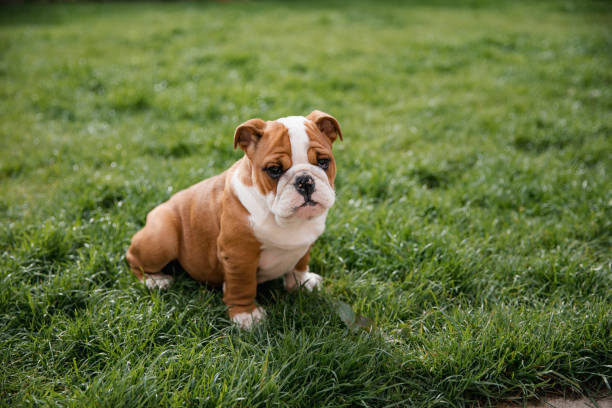
7. Living with Other Dogs
As a general rule, English bulldogs live well with other dogs as they are friendly and sociable. It is important that your English bulldog puppy is socialized at an early age to ensure that they are comfortable around others.
Female English bulldogs may be more aggressive with other female dogs. Keep an eye on them as they become familiar and learn to coexist.
English bulldogs are generally very possessive over their food. Keep them separated from other dogs during feeding with no access to their food. This is the one instance when the well-tempered bulldog may become aggressive.
8. Life Expectancy
English bulldogs have been bred for a very specific look, one that has created for many mutations. These mutations have led to increased risk of health problems, therefore shortening their lifespan compared to other breeds.
The average lifespan for an English bulldog is 8-10 years. There have been bulldogs that have passed earlier as well as ones that have lived into the 12-13-year range. Their lives may be shorter, but it just means you have to make the most of the time you get to spend with them!
9. Prone to Health Problems
English Bulldog puppies may be perfectly healthy with no problems in the beginning, but English bulldogs are prone to a variety of health problems. Here’s a brief introduction to some of the problems they are likely to face in their lifetime.
- Brachycephalic Syndrome
We all know a bulldog is coming from a mile away because we can hear them! Being bred for their short noses and head, this creates shortened nasal passages, a small trachea, and an elongated soft palate. This causes more difficulty in breathing and may lead to more serious issues as they age. Many young bulldogs will undergo a staphylectomy, or shortening the soft palate to allow for easier breathing.
- Infections
Bulldogs are particularly prone to infection in the folds of their face, skin, eyes, ears, and between the toes. These infections can be controlled through medication and prevented through consistent bathing. Food allergies may be cause of some of these infections and diet should be monitored to prevent inflammation.
- Hip, Spinal, and Joint Pain
Bulldogs may develop joint problems as they age. Their heavy, low, and long body structure puts stress in their bones and joints, making them more susceptible to deformities and skeletal conditions.
- Higher Tumor Breed
Bulldogs are deemed more likely to get tumors than other dogs. These could appear within the neuroendocrine and central nervous systems.
- Heart Problems
English bulldogs are at a high risk for cardiac muscle problems and other related heart diseases, especially as they age. Make sure you have your bulldog examined for heart murmurs and other cardiac issues.
10. Some Have Corkscrew Tails

Along with the rest of the bulldog, their tails have been selectively bred to form a corkscrew. While this may be very cute, it could cause some health concerns. The severity of the corkscrew may have impacts on the dog’s spinal column. This may lead to twisted vertebrae in the spine, causing nerve and disc disease as well as spinal pain.
In addition to structural problems, you need to make sure you help them clean behind the tail. This area has a high chance of becoming infected as feces or dirt can become trapped. Wipe them down after they use the bathroom to reduce problems in this area.
11. Coat Care
One of the things about English Bulldog puppies is they tend to have very dry skin and you might see dandruff build up on their coat. Our favorite method to keep their skin healthy is giving them some coconut oil. Your bully will love it and their coat will be much less dry. Give about 2 teaspoons a day.
To keep their coat nice and smooth, you’ll need to bathe them fairly frequently. This could be once a week or every other week based on activity level. Increased bathing will keep bacteria and yeast under control, preventing infection. This is particularly important between their toes, in their facial folds, and near their anus.
Keeping these areas clean will promote overall wellness. With their short hair, they do shed, but there is little you need to do other than give them a good shampoo with warm water!
12. Exercise
Bulldogs do not require a lot of exercise. A suggestion would be 20-30 minutes per day, but this will vary based on your individual dog’s needs. A bulldog puppy will be full of energy, requiring more exercise than an older bulldog.
When exercising, you should expect walks to be short. English bulldogs are not well-suited for hiking or strenuous activity. They tend to roll at a more leisurely pace. Make sure all exercise is done in cool temperatures as they are at great risk of overheating especially during exercise.
While they come with their quirks, English bulldogs are lovable companions for almost any home!
13. Love Water but Not Swimmers

Our bulldog puppy loves the water, unfortunately, they are not strong swimmers. I highly recommend getting a life vest if you have a pool in your backyard. This way, they can enjoy the water but you’ll have some peace of mind.
